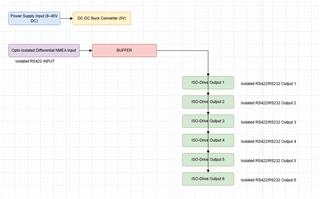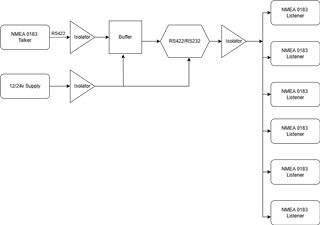Other Parts Discussed in Thread: ISOW7842, ISO7842, ISO1410, ISO6441, ISO6741, ISO7741, ISOW7741, ISOM8110, ISOM8710
Tool/software:
Hi,
I have a GPS NMEA 0183 RS422 device(talker). I need to connect 6 devices(Listener) with GPS output. I am designing a board that need the following features.
- Isolate the talker with listener
- Buffer the talker output so it can drive 6 Listener devices. Usually, it can drive 2 devices without any buffering or amplification
- Convert amplified output to RS232/RS422 based on the requirements.
- There will be only one way communication i.e. Talker to Receiver(RS422 input to RS232 Output)
Plz, see the attached block diagram for refence.

Can i follow this reference design as a starting point for this board design?
https://www.ti.com/tool/TIDA-060008
If there is any other suggestions, please let me know
Thanks


